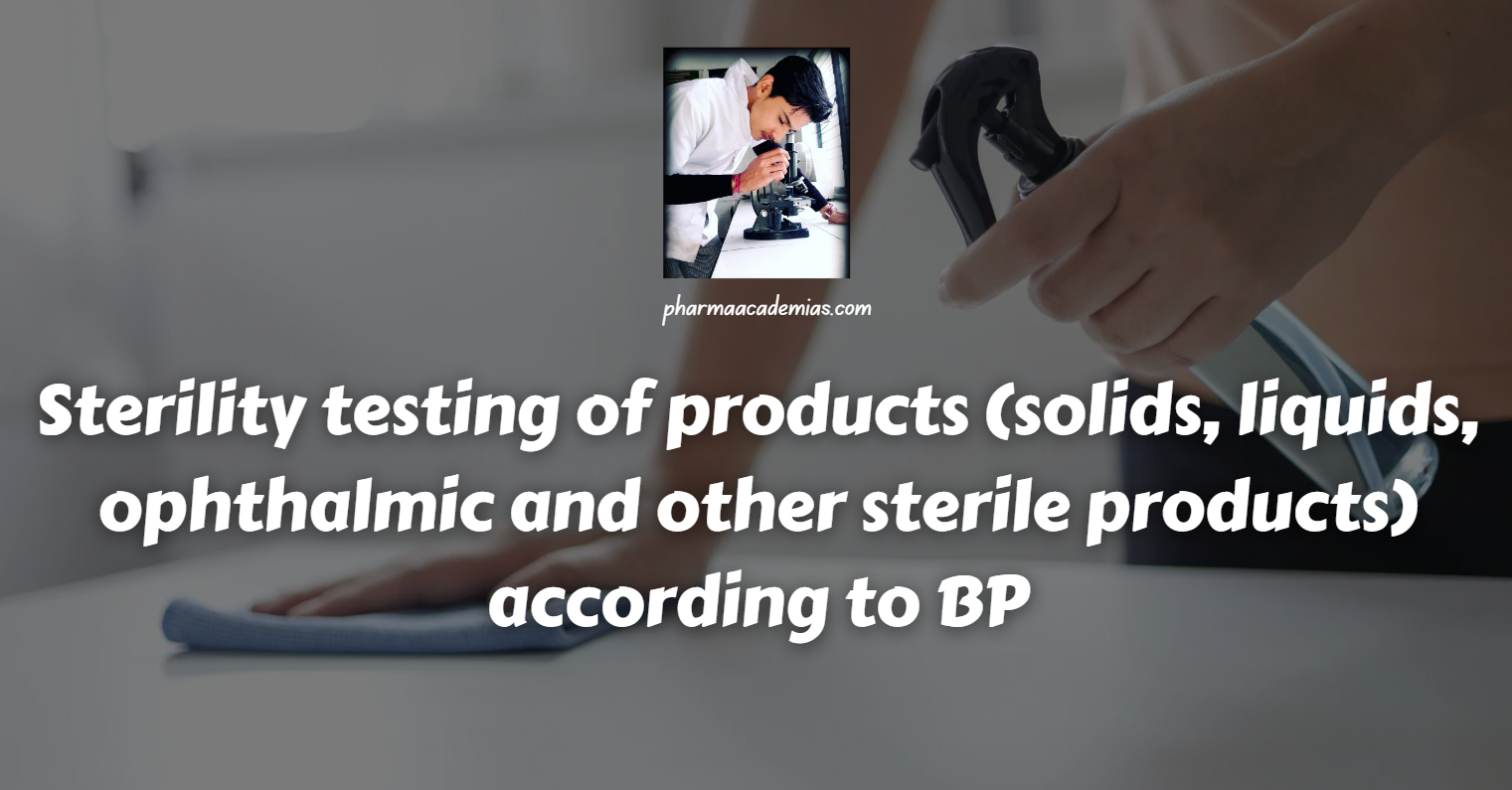Sterility testing of products (solids, liquids, ophthalmic, and other sterile products) according to USP
Sterility testing is a critical aspect of pharmaceutical quality control, ensuring that sterile products are free from viable microorganisms. The United States Pharmacopeia (USP) provides comprehensive guidelines for sterility testing of various pharmaceutical products, including solids, liquids, ophthalmic preparations, and other sterile products. Here’s a detailed note on sterility testing according to the United States … Read more









